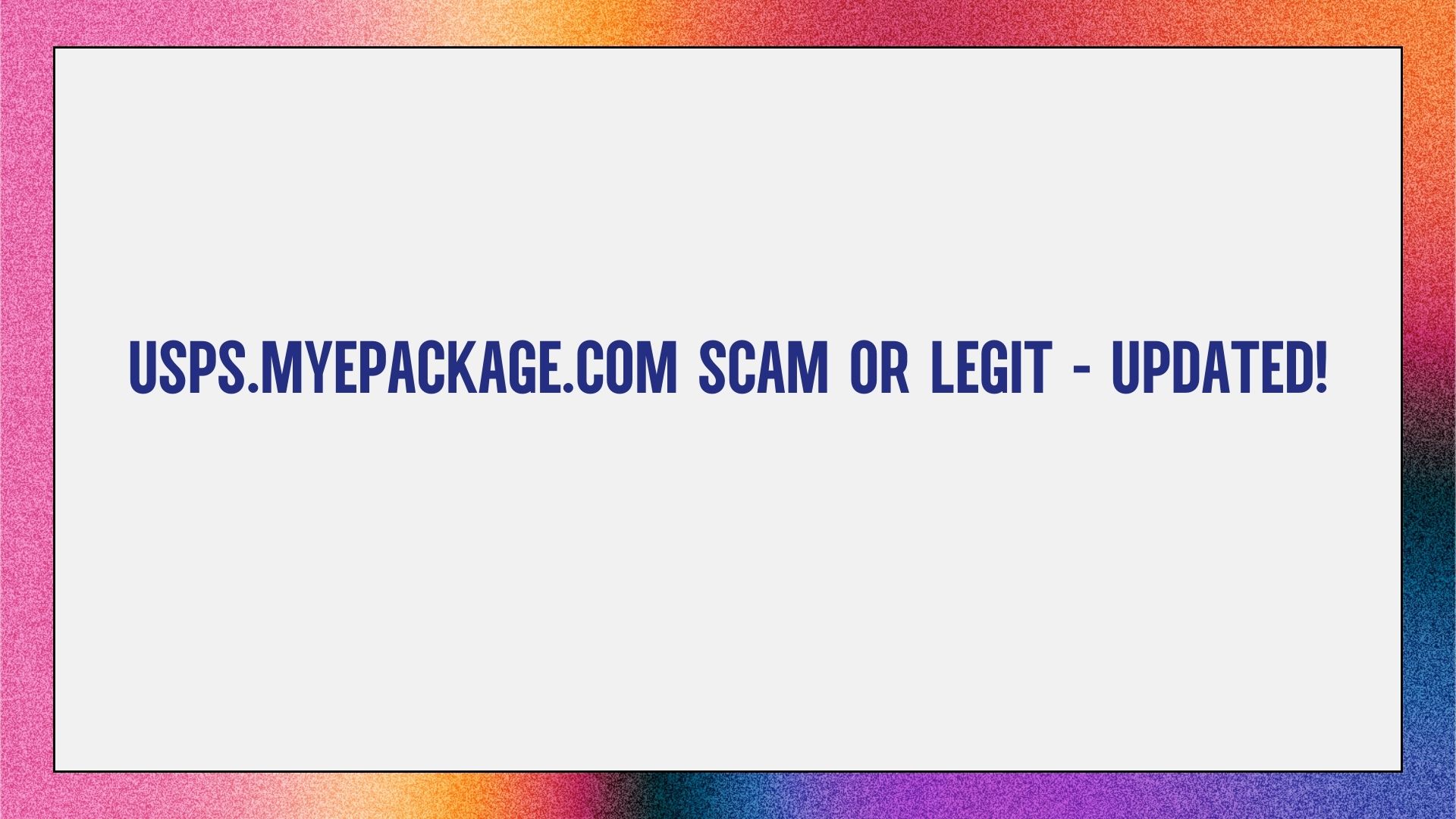USPS.Myepackage.com has recently emerged as a suspicious website and many online shoppers report receiving emails and text messages. But is it a real USPS website that can help you solve your shipping problems? Or is this another scam?
This comprehensive search will uncover the truth about USPS.Myepackage.com.
After reading the entire disclosure, you will know how to spot these scams and move forward. Let’s delve deeper…
The story of the USPS.Myepackage.com scam
USPS.Myepackage.com is a scam website pretending to be a registered postal carrier.
Sophisticated scams work by sending messages via SMS and email to direct recipients to the target. Victims are tricked into entering personal and financial information to resolve fraudulent delivery issues.
In fact, USPS.Myepackage.com has nothing to do with the United States Postal Service. All information sent is collected by scammers to commit theft and financial fraud.
Sophisticated fraud exploits a number of consumer vulnerabilities:
- Experience with USPS tracking services
- Expected to be delivered
- I need a slow ball
- Trust in the reliable and fast delivery of emails/texts.
However, if you look closely, you will notice that there are suspicious comments and many red flags on the site.
How does the USPS.Myepackage.com scam work?
Courier scams often unfold in a few key steps when the target is connected via email or SMS.
1. The lies
The first component is a fraud alert sent to the victim’s inbox and mobile phone.
Email version
- Fake return address as USPS
- Title of incorrect delivery issue
- The body claims that problems need victims
- A fake tracking number increases legitimacy
- Outline links to USPS.Myepackage.com
SMS version
- Take the USPS system, for example
- It says the delivery attempt failed.
- Claim victims at the link provided
- Contains incorrect tracking information.
Both words create a belief that makes the recipient think about solving the problem quickly.
2. Visit fake websites
When victims click on the link, they are redirected to the USPS.Myepackage.com website. This fake website copies the product to look like the real USPS.com.
The fake portal gives users access to personal information in order to solve the shipping problem mentioned in the first fake message.
3. Submit your information
The response form at USPS.Myepackage.com requests the following sensitive information:
- The right name
- address
- The telephone number
- E-mail address
- Credit card number
- Security code
- Expiry date
Victims are willing to provide information because they believe it is necessary to complete a legitimate shipping order.
4. Personal theft
After collecting your data, fraudsters will have the information they need to steal your identity and commit financial fraud.
Fraudsters use your data to:
Access to victims’ bank/credit accounts and their exfiltration
The purchase was not authorized using your saved payment method
Open new fake accounts to steal more money
Selling Stolen Data on the Dark Web
Meanwhile, when victims realize they have been deceived, they react.
This package delivery method seems very difficult. However, for fraud experts, the entire process is tailored to help them take quick action against theft and cybercrime.
Real Victims of USPS.Myepackage.com Scam
It is important to understand how this type of deception works in theory.
But the real experiences of victims make it clear how harmful and detrimental fraud can be.
The following is a real example of a person who was scammed by the USPS.Myepackage.com scam and whose information was exposed.
Final thoughts on the USPS My Epackage scam
The growth of e-commerce is largely dependent on consumers trusting delivery services to reliably fulfill online orders with effective tracking and updates.
Criminals are undoubtedly aware of this dependency and are attempting to leverage our collective knowledge of carriers such as the USPS to lend credibility to package scams that are likely to deceive victims. Masu.
But as this investigative article shows, sites like USPS.Myepackage.com violate that trust and responsibility by impersonating legitimate postal services and stealing personal information.
You should always be wary of receiving unsolicited communications regarding account or shipping issues. Separate channel validation protects against schemes designed for exigency over security best practices.
Having a better understanding of the ins and outs of package delivery scams, including how they work, why people get scammed, and how to deal with them, can help you keep your shopping convenient without the scam aspect.
The next time you receive an email or SMS notification regarding a delivery issue, carefully review the content and be aware of the cunning tactics used by scammers. Protect your data, identity, and finances from breaches.
And hopefully, authorities will soon stop fake domains like USPS.Myepackage.com that exploit the public’s dependence on postal service providers to enable cybercrime around the world.
Read Also – Mamajimart Reviews

